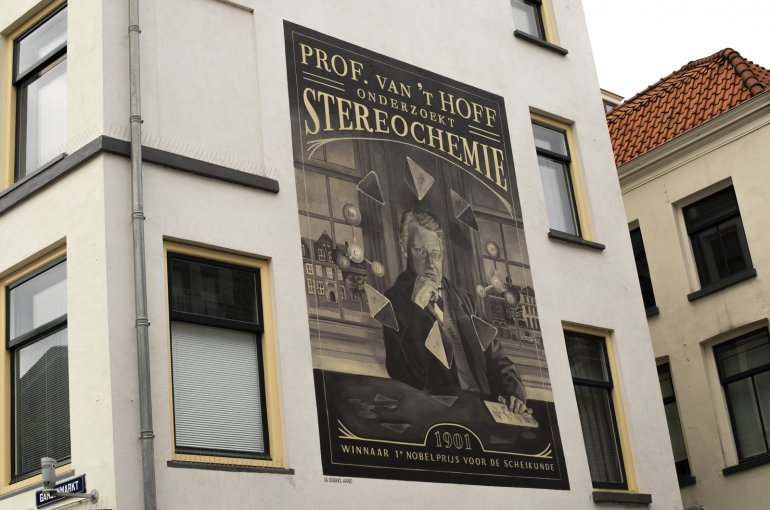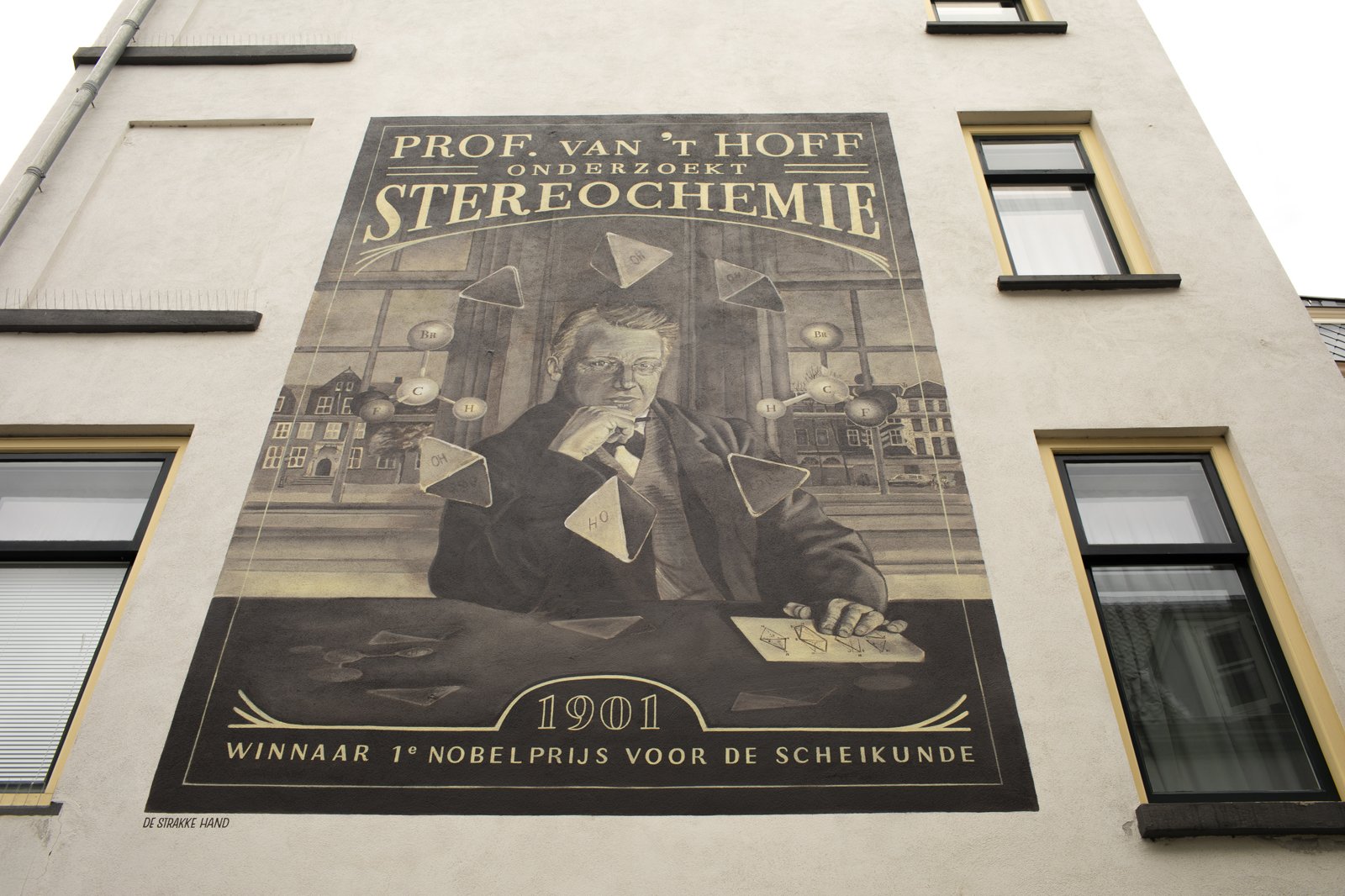Third scientific wall mural depicts Van ‘t Hoff, first Nobel Prize winner in Chemistry

It’s not a very well-known fact, but the very first Nobel Prize in Chemistry was awarded to a researcher who obtained his PhD at Utrecht University. In 1901, Jacobus van ’t Hoff won the Nobel Prize for his research into thermodynamics. But at least as important was Van ‘t Hoff’s discovery of stereochemistry, as illustrated on the mural unveiled today at the Ganzenmarkt in Utrecht.
The mural is an initiative by Utrecht physicists Ingmar Swart and Sander Kempkes and the artist’s collective De Strakke Hand.
Van ‘t Hoff (1852) wrote his dissertation in Utrecht in 1874 on stereochemistry, or ‘spatial chemistry’: the phenomenon that chemicals composed of the same atoms can be structured in different ways, for example as mirror images of one another. Different variants of the same molecule, called enantiomers, can have very different characteristics.
Thalidomide
The importance of stereochemistry cannot be underestimated. The three-dimensional form of a molecule is one of the factors that determines its characteristics, such as its melting temperature and chemical characteristics. When applied to pharmaceuticals, that can make the difference between life and death: the one form of a molecule can be an effective drug, while its mirror image can be fatal.
One famous example is thalidomide, a drug to treat nausea that was on the market around the year 1960. The drug contained both mirror images of a molecule, but one of the two caused severe birth defects, resulting in thousands of ‘thalidomide babies’. Scientists later found that the human body can convert one mirror image into the other.

Van ’t Hoff
The researcher Jacobus Henricus van 't Hoff (1852) was an avid traveller. He studied in Delft, Leiden, Bonn and Paris, and obtained his PhD at Utrecht University in 1874. His research into stereochemistry was so far ahead of its time that he had difficulty finding paid employment as a scientist.
But his colleagues eventually began to appreciate the value of his work, and he was appointed as a professor in Amsterdam in 1878. He received the very first Nobel Prize in Chemistry for his research into thermodynamics. By that time he was working in Berlin, where he passed away in 1911. In addition to his work in chemistry, Van ’t Hoff was a passionate lover of nature, philosophy and poetry.
Scientific murals
Four artists from De Strakke Hand completed the mural in only four days.
Utrecht is now home to three of these scientific murals. Prof. Buys Ballot studies the doppler effect is on display near the railroad crossing at the Burgemeester Reigerstraat. Prof. Ornstein studies random movement livens up a wall on the Oosterkade, near Station Vaartsche Rijn. The project was set up by physicists Ingmar Swart and Sander Kempkes to show Utrecht’s residents and visitors some of the pioneering research that has taken place in the city.

